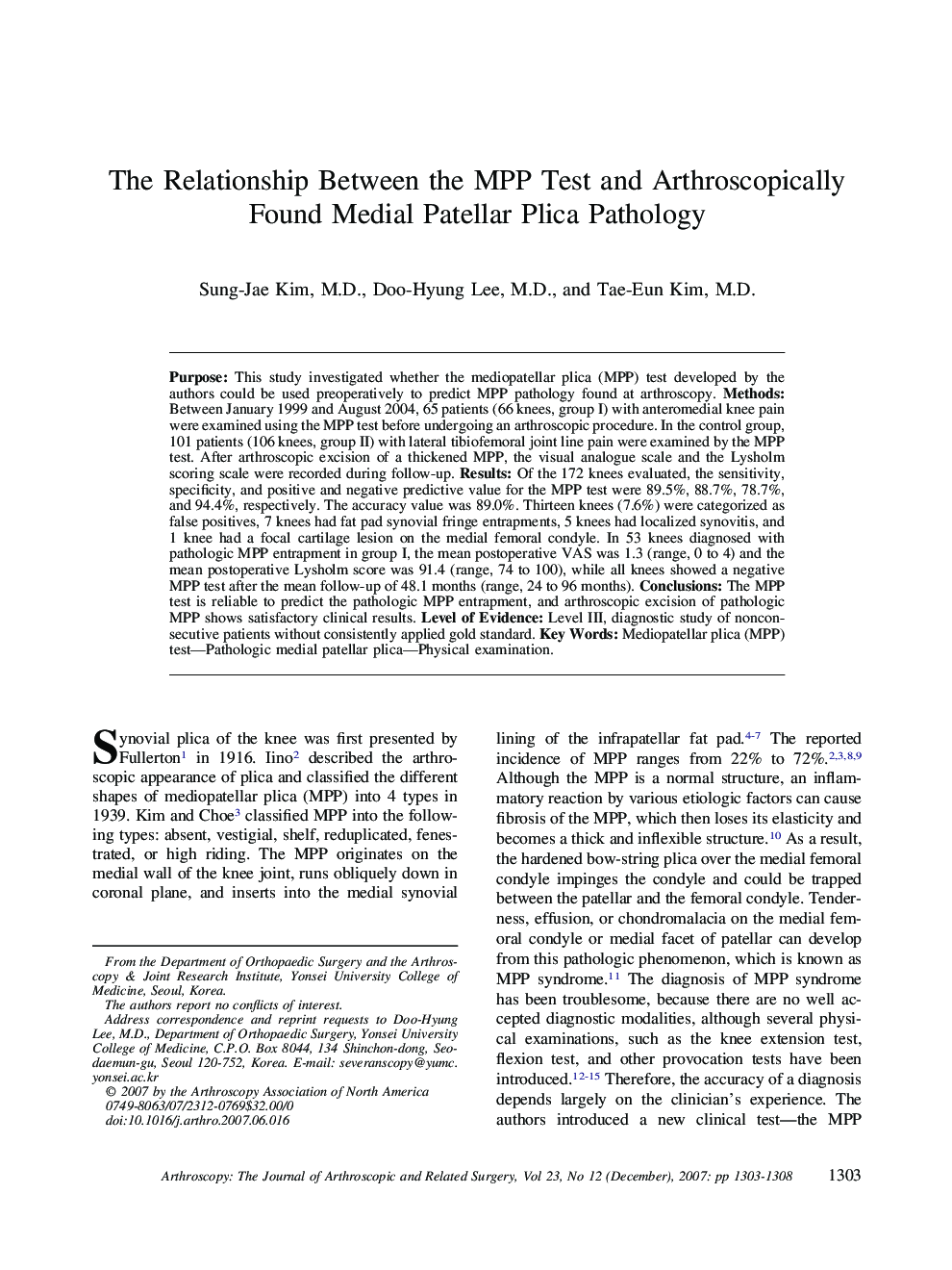| Article ID | Journal | Published Year | Pages | File Type |
|---|---|---|---|---|
| 4045305 | Arthroscopy: The Journal of Arthroscopic & Related Surgery | 2007 | 6 Pages |
Purpose: This study investigated whether the mediopatellar plica (MPP) test developed by the authors could be used preoperatively to predict MPP pathology found at arthroscopy. Methods: Between January 1999 and August 2004, 65 patients (66 knees, group I) with anteromedial knee pain were examined using the MPP test before undergoing an arthroscopic procedure. In the control group, 101 patients (106 knees, group II) with lateral tibiofemoral joint line pain were examined by the MPP test. After arthroscopic excision of a thickened MPP, the visual analogue scale and the Lysholm scoring scale were recorded during follow-up. Results: Of the 172 knees evaluated, the sensitivity, specificity, and positive and negative predictive value for the MPP test were 89.5%, 88.7%, 78.7%, and 94.4%, respectively. The accuracy value was 89.0%. Thirteen knees (7.6%) were categorized as false positives, 7 knees had fat pad synovial fringe entrapments, 5 knees had localized synovitis, and 1 knee had a focal cartilage lesion on the medial femoral condyle. In 53 knees diagnosed with pathologic MPP entrapment in group I, the mean postoperative VAS was 1.3 (range, 0 to 4) and the mean postoperative Lysholm score was 91.4 (range, 74 to 100), while all knees showed a negative MPP test after the mean follow-up of 48.1 months (range, 24 to 96 months). Conclusions: The MPP test is reliable to predict the pathologic MPP entrapment, and arthroscopic excision of pathologic MPP shows satisfactory clinical results. Level of Evidence: Level III, diagnostic study of nonconsecutive patients without consistently applied gold standard.
